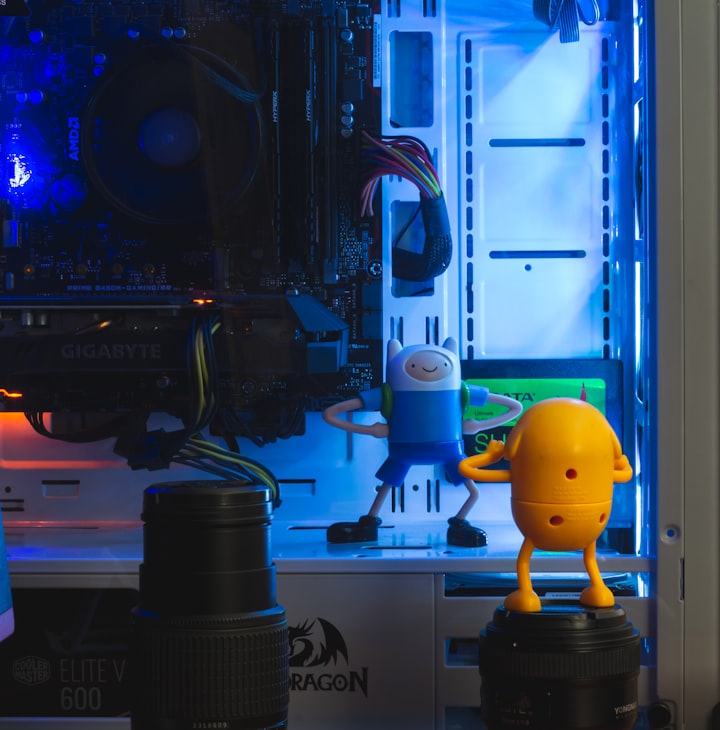Using Virtual Reality to Improve your Mental Health
It's impressive how far technology has come

Introduction
Virtual reality (VR) is one of the hottest technologies out there. It's also gaining traction as a tool for treating mental illness thanks to its ability to help patients confront their fears and reduce anxiety through simulations.
While VR is still in its early days, it offers exciting opportunities for people who suffer from psychological conditions without having to take medication or spend time in therapy sessions.
How VR is being used to Treat Mental Illness
VR therapy is becoming a popular method of treating mental illness. It can be used to treat anxiety, depression, addiction and PTSD.
A 2016 meta-analysis looked at previous studies of virtual reality as a treatment for PTSD and found that "virtual reality exposure therapy" was an effective way to help patients recover from their trauma symptoms.
The researchers concluded: "There is sufficient evidence supporting the use of Virtual Reality Exposure Therapy in treating posttraumatic stress disorder (PTSD)."
They go on to explain why this form of therapy has proven so successful: "The high level of immersion provided by VR may help patients with PTSD by simulating traumatic events in controlled ways that do not cause distress."
VR and Trauma Therapy
There is a lot of research that suggests virtual reality can be used to treat PTSD. Some studies have shown that it can help reduce the flashbacks and anxiety associated with PTSD, while others have found that VR therapy is just as effective at treating the condition as real-life therapy.
VR has also shown promise in treating other mental illnesses, including depression and addiction. In one study, participants were asked to use a VR headset and complete a series of tasks while their brain activity was monitored by an EEG device.
Researchers found that those who had been diagnosed with depression had higher levels of activity when completing an unpleasant task compared to those without depression.
But when they wore the headsets and immersed themselves in an enjoyable experience (like flying over Paris), their brain activity was similar to patients who didn't suffer from depression. Further studies are needed before we know if this method will work effectively for all populations with mental health issues
Anxiety and fear
VR can be used to treat anxiety and fear.
Anxiety: A virtual environment that provides you with a safe space in which you can explore your fears without judgment, is effective at treating anxiety. It allows individuals with anxiety to experience their fears without the safety of real life or other people present, thereby allowing them to confront their fears directly.
For example, if someone has claustrophobia (an extreme fear of enclosed spaces), they may be able to use VR therapy by creating an immersive environment where they are surrounded by nothing but walls and water while wearing headphones which block out all external sound.
They can then take turns experiencing different scenarios until they feel comfortable enough at being alone in the dark without having any idea what might happen next. This process can take hours upon hours depending on each person’s specific needs.
Fear: Similar techniques could also be applied for coping with other types of phobias such as agoraphobia (a fear of open spaces) or social phobia (fearfulness that keeps you from going out into public).
Depression
Depression is a debilitating condition that has been shown to be caused by a few different factors. It can be the result of genetic inheritance, or it can stem from negative life events or circumstances. As VR becomes more advanced and popular, it may become a viable option for treating depression in future generations.
VR can help with depression in several ways:
It helps with social interaction by creating an environment where users can interact with other people who are virtually present on the same platform as them.
This allows those who suffer from social anxiety to engage with others in a safe environment where they aren't expected to perform perfectly or worry about making mistakes.
It helps people become more active physically through gaming options such as walking around while wearing the headset (also known as "room scale"), which encourages movement even after virtual reality is turned off because something positive has occurred within their mind during gameplay (for example: beating an opponent).
In addition, many games offer physical fitness routines built into them so players don't have time for idle conversation instead of exercising. Such features allow gamers' bodies as well as minds to benefit from playing video games together rather than alone at home doing nothing productive whatsoever.
Addiction treatment
Virtual reality can be used to treat addiction, including alcohol, nicotine and gambling addictions.
It can help addicts to understand the consequences of their addiction, which will increase their motivation to stop. For example, if you're trying to quit smoking you might use virtual reality to go through what it's like when you're out with friends and they offer you a cigarette.
This helps you prepare yourself for those situations in real life so that when they happen again in the future, it won't feel as tempting as before.
It can also help addicts learn how to cope with cravings. By experiencing them first-hand in VR they develop new coping mechanisms which they can use later on when faced with similar situations outside of VR.
Finally virtual reality can teach people how to deal with triggers. The people/places/things that normally lead them back down their old path but don't have this effect anymore because now that pathway leads only towards sobriety
Conclusion
Virtual reality has been used to treat a range of mental health conditions, including addiction, anxiety and depression, PTSD and phobias. While the research is still in its early stages, the potential is exciting.
The most common way that virtual reality is used for mental health treatment is to help people face their anxieties head-on. It can be used for exposure therapy (exposing someone to their fear in a controlled setting) or as an alternative form of treatment for phobias like arachnophobia (fear of spiders).
The technology has also been successful at helping people overcome addictions. A study found that VR was effective at reducing cravings for alcohol and food.






Comments
There are no comments for this story
Be the first to respond and start the conversation.